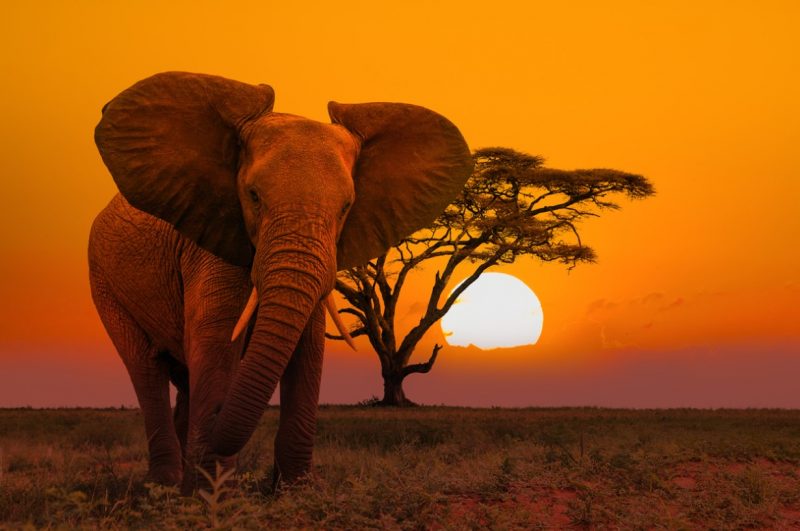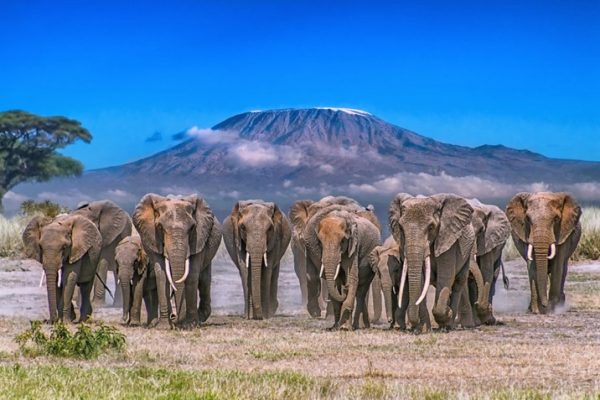When discussing hunting in Africa, the name Karamojo Bell resonates as a true legend.
Considered one of the greatest elephant hunters of all time, Walter Dalrymple Maitland Bell—known as Karamojo Bell—embodied the spirit of adventure and mastery of hunting skills. Born on September 8, 1880, in Scotland, Bell left an indelible mark on African hunting history with his exceptional skill, courage, and profound understanding of animal behavior.
The nickname “Karamojo” originates from the Karamoja region in present-day Uganda, a wild and remote land that Bell explored extensively and where he hunted for much of his life. His fame stems not only from the remarkable number of elephants he is said to have taken—estimated at over 1,000—but also from the innovative and respectful techniques he employed in hunting these giants, making him an iconic figure among hunters and naturalists.
The Beginning of an Extraordinary Adventure
Walter Bell grew up in Scotland, but his restless spirit drove him to seek adventure far from home. After serving as a volunteer in the Second Boer War, he turned his attention to hunting, drawn to the wild and untamed lands of Africa. At just 27 years old, he embarked on his first of many journeys to the African continent, beginning a career that would make him immortal.
Bell arrived in Africa during a time when much of the continent remained largely unexplored. Vast savannas, dense forests, and marshlands teemed with wildlife, and elephant hunting for ivory was considered one of the most prestigious pursuits. However, Bell was no ordinary hunter. From the beginning, he developed a scientific and methodical approach to hunting, studying elephant anatomy to ensure precise and ethical kills that minimized the animal’s suffering.
The “Brain Shot” Technique

Bell meticulously studied the structure of an elephant’s skull, understanding that a well-placed shot to the brain would result in an immediate and humane kill. This technique demanded close-range encounters and nerves of steel, as any misstep could lead to a dangerous charge from an enraged elephant.
Karamoja: A Wild and Untamed Land
The Karamoja region of Uganda became Bell’s preferred hunting ground. This remote area, characterized by vast savannas and spectacular mountains, was home to local tribes such as the Karamojong, with whom Bell developed a mutual respect. He often employed local guides and hunters, learning from their techniques and strategies for navigating such a challenging environment.
Bell spent years exploring Karamoja and its surrounding regions, living through adventures that few would dare to imagine. He survived tropical diseases, crossed territories teeming with lions, and faced dangerously close encounters with elephants. Despite the hardships, he described these experiences as some of the most rewarding of his life—a testament to his indomitable spirit and passion for the wild.
A Naturalist Ahead of His Time
While Bell is best known for his hunting exploits, he was also a keen observer of African wildlife. His detailed notes on elephant behavior, social structures, and habitats are considered valuable contributions to biology and ecology. Bell understood the importance of managing natural resources and opposed the indiscriminate exploitation of wildlife.
He was also a talented artist, often sketching and painting scenes he observed during his expeditions. These works, along with his writings, offer a unique glimpse into life in the African savanna during the early 20th century.
Bell’s Choice of Firearms
Bell’s choice of firearms has been a topic of much discussion and admiration. Unlike many hunters of his time, who preferred large-caliber rifles such as the .450 or .500 Nitro Express, Bell used smaller calibers like the .275 Rigby. This lightweight and maneuverable rifle allowed him to shoot with extreme precision, a quality essential for his famed brain shots.
He also used other rifles, such as the .318 Westley Richards and the .256 Mannlicher, all designed for accuracy and reliability. Bell’s ability to maximize the potential of these calibers, considered inadequate by many for elephant hunting, is a testament to his technical expertise and deep understanding of ballistics.
A Life of Adventure
Karamojo Bell’s life extended far beyond hunting. During World War I, he served as a reconnaissance pilot, once again demonstrating his courage and determination. After the war, he returned to Africa, where he continued to explore, hunt, and write about his experiences.
One of his most famous books, “Bell of Africa,” is an autobiography that provides a snapshot of his adventurous life. In it, Bell not only recounts his hunting achievements but also shares his fascination with the cultures and landscapes he encountered during his travels.
The Legacy of Karamojo Bell

For many, Bell represents the symbol of a bygone era, a time when hunting was not just a sport but also a means of exploring and understanding the natural world. His respectful and scientific approach to hunting remains a model for anyone wishing to engage in the activity with awareness and respect.
Karamojo Bell is more than a historical figure; he is a legend embodying the essence of adventure, knowledge, and reverence for nature. His extraordinary life, spent between African savannas and wartime skies, is a tribute to courage, curiosity, and passion for the wild. For anyone who loves hunting, Bell’s story is an endless source of inspiration and a reminder of the profound connection between humans and the natural world.
Karamojo Bell’s Books: Chronicles of a Master Hunter
While renowned for his innovative elephant hunting techniques, Bell also left a significant literary legacy, capturing the emotions, adventures, and experiences of his African expeditions in his books. Through his works, Bell not only recounts his extraordinary exploits but also provides valuable lessons on hunting techniques, ballistics, and African wildlife.
His books are considered classics of hunting literature, offering a remarkable glimpse into the untamed Africa of the early 20th century.
1. “The Wanderings of an Elephant Hunter” (1923): Bell’s most famous book, this work is a collection of stories and reflections on his elephant hunting career. It includes practical advice, technical details, and thrilling tales of his expeditions.
2. “Karamojo Safari” (1949): This book provides a broader narrative of Bell’s adventures in the Karamoja region. It delves into his relationships with local tribes and his exploration of one of Africa’s most remote areas.
3. “Bell of Africa” (1960): Published posthumously, this autobiography offers an intimate look at Bell’s life, covering his childhood in Scotland, his military career, and his African expeditions.
Through his writings, Bell continues to inspire those who dream of adventure and those who seek to understand the wild world he so deeply respected.







